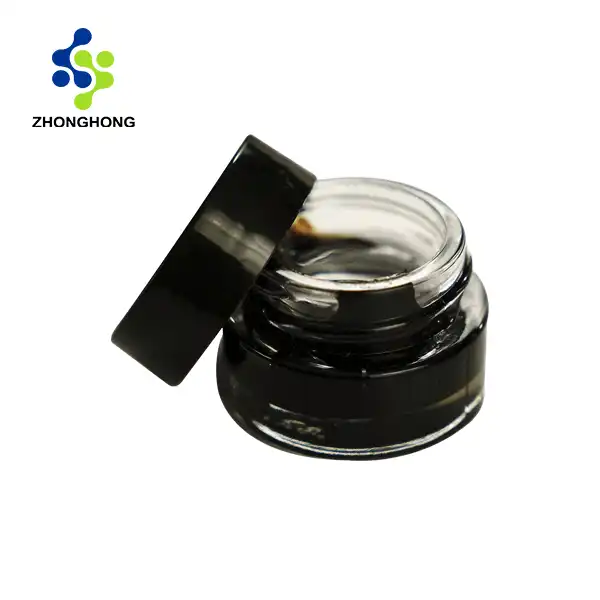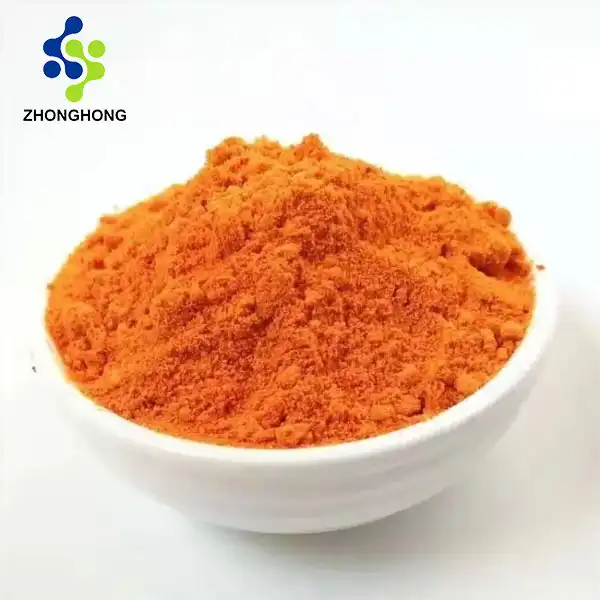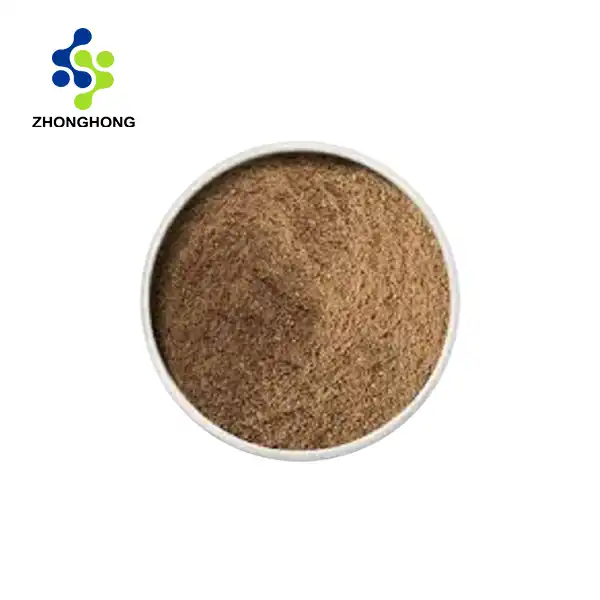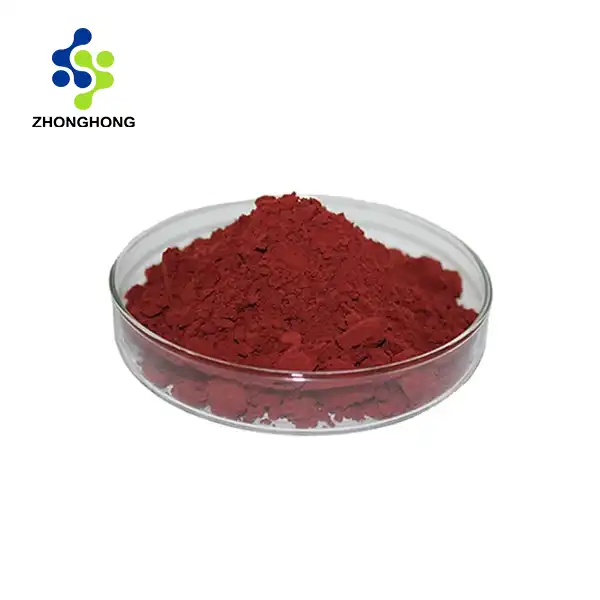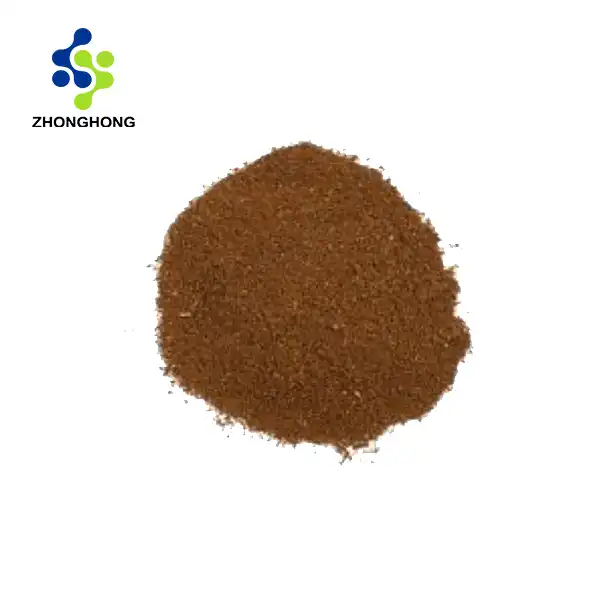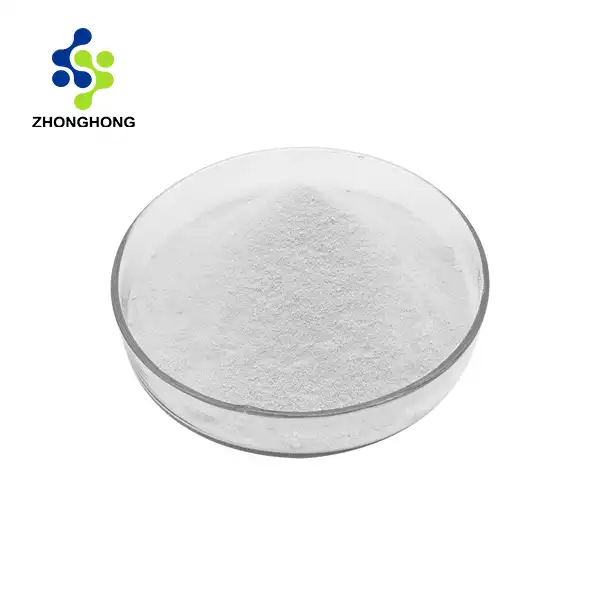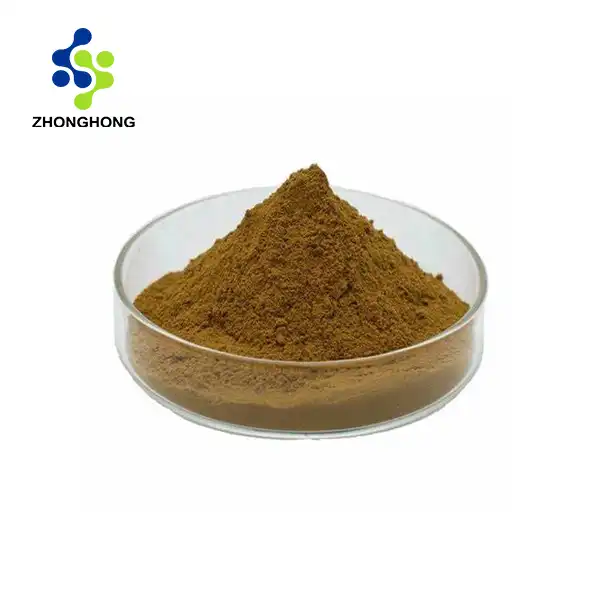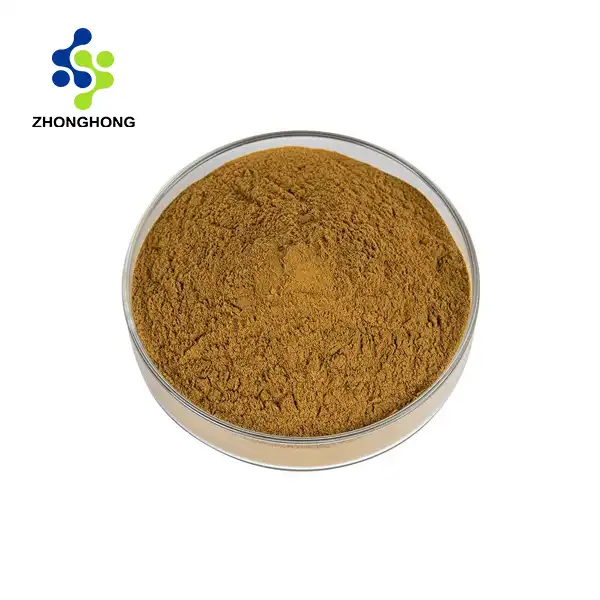The Science Behind Kojic Acid Production
Biochemical Pathways of Kojic Acid Synthesis
Along with other fungi, Aspergillus oryzae and Aspergillus flavus generate kojic acid, also known as 5-hydroxy-2-hydroxymethyl-4H-pyran-4-one, as a secondary metabolite. The manufacture of kojic acid within the fungal cells involves a complex set of enzyme processes. The main substrate, glucose, is phosphorylated and then undergoes changes via the pentose phosphate pathway. Two crucial enzymes in this biogenesis the path are glucose-6-phosphate dehydrogenase and kojic acid glucose oxidase. These enzymes catalyze the oxidation and cyclization processes that eventually produce the kojic acid molecule.
Optimal Conditions for Microbial Fermentation
Successful production of kojic acid powder hinges on maintaining optimal conditions during the fermentation process. The growth medium composition plays a crucial role, typically consisting of glucose or other carbohydrate sources, along with essential nutrients like nitrogen compounds and trace minerals. Temperature control is critical, with most kojic acid-producing fungi thriving between 25°C and 30°C. pH levels also significantly influence kojic acid yield, with an optimal range typically between 4.0 and 6.0. Adequate aeration is necessary to support fungal growth and metabolic activities. Monitoring and adjusting these parameters throughout the fermentation period, which can last several days to weeks, is essential for maximizing kojic acid production.
Strain Selection and Genetic Optimization
The choice of microbial strain is paramount in kojic acid production. While Aspergillus oryzae is the most commonly used organism, other species like Penicillium and Acetobacter have also shown potential. Researchers continually work on strain improvement through various techniques, including mutagenesis and genetic engineering. These efforts aim to develop high-yielding strains that can produce kojic acid more efficiently and in greater quantities. Advanced biotechnological approaches, such as metabolic engineering and synthetic biology, are being explored to enhance the kojic acid biosynthetic pathways within these microorganisms, potentially leading to more cost-effective and sustainable production methods.
Industrial Production Techniques for Kojic Acid Powder
Large-Scale Fermentation Systems
Industrial production of kojic acid powder relies heavily on large-scale fermentation systems. These setups typically involve bioreactors or fermenters with capacities ranging from hundreds to thousands of liters. The design of these systems incorporates features that allow precise control over environmental parameters crucial for optimal kojic acid production. Advanced bioreactors are equipped with sensors and automated control systems to monitor and adjust temperature, pH, dissolved oxygen levels, and agitation speed in real-time. Some industrial setups employ fed-batch or continuous fermentation techniques to enhance productivity and maintain consistent product quality. The choice between submerged fermentation and solid-state fermentation depends on factors such as substrate type, desired yield, and operational considerations.
Downstream Processing and Purification
To satisfy quality requirements, kojic acid must be isolated from the fermentation broth and purified. This downstream processing begins with the removal of biomass using centrifugation or filtering. The liquid is subsequently purified using a variety of processes such as solvent extraction, ion-exchange chromatography, and crystallization. Advanced membrane technologies like as ultrafiltration and nanofiltration are being used to efficiently separate and concentrate kojic acid. The purified kojic acid solution is subsequently dried using methods such as spray drying or freeze drying to produce powder. These drying processes are meticulously managed to maintain the chemical structure and purity of the kojic acid while reaching the necessary particle size and flowability properties.
Quality Control and Product Standardization
Ensuring the quality and consistency of kojic acid powder is crucial for meeting regulatory standards and customer expectations. Rigorous quality control measures are implemented throughout the production process. This includes regular testing of raw materials, in-process monitoring, and final product analysis. Analytical techniques such as High-Performance Liquid Chromatography (HPLC) and spectrophotometry are commonly used to assess kojic acid purity and concentration. Physical properties like particle size distribution, moisture content, and solubility are also carefully evaluated. Many manufacturers adhere to Good Manufacturing Practice (GMP) guidelines and obtain certifications like ISO to demonstrate their commitment to quality. Standardization of the final product often involves blending different batches to achieve consistent potency and characteristics, ensuring that each batch of kojic acid powder meets predetermined specifications.
Applications and Market Trends of Kojic Acid Powder
Cosmetic and Skincare Industry Usage
Kojic acid powder has gained significant traction in the cosmetic and skincare industry due to its skin-lightening and anti-aging properties. It is widely used in formulations for products such as serums, creams, and lotions targeting hyperpigmentation, dark spots, and uneven skin tone. The mechanism of action involves inhibiting tyrosinase, an enzyme crucial in melanin production. This makes kojic acid particularly popular in products marketed for skin brightening and combating melasma. Additionally, kojic acid's antioxidant properties contribute to its anti-aging effects, helping to protect the skin from free radical damage. The increasing consumer demand for natural and plant-derived skincare ingredients has further boosted the popularity of kojic acid, as it can be produced through fermentation of natural substrates.
Emerging Applications in Food and Agriculture
Beyond its well-established role in cosmetics, kojic acid powder is finding new applications in the food and agricultural sectors. In the food industry, it is used as a natural preservative due to its antimicrobial properties, helping to extend the shelf life of various products. Its ability to inhibit polyphenol oxidase makes it effective in preventing enzymatic browning in fruits and vegetables, maintaining their visual appeal. In agriculture, kojic acid has shown potential as a biopesticide, offering an environmentally friendly alternative to synthetic pesticides. Research is ongoing into its use as a growth promoter for certain crops and its potential in enhancing plant resistance to various stresses. These diverse applications are expanding the market for kojic acid powder beyond its traditional cosmetic uses.
Global Market Dynamics and Future Prospects
The global market for kojic acid powder is experiencing steady growth, driven by increasing demand from various industries. The Asia-Pacific region, particularly countries like Japan, South Korea, and China, remains a significant market due to the popularity of skin-lightening products. However, growing awareness of skincare in Western markets is also contributing to increased demand. The market is characterized by a mix of established players and new entrants, with ongoing research and development efforts focused on improving production efficiency and exploring novel applications. Regulatory landscapes, particularly concerning the use of kojic acid in cosmetics, vary across regions and continue to evolve, impacting market dynamics. Future growth prospects appear promising, with anticipated expansion in both traditional and emerging application areas, coupled with advancements in production technologies that may lead to more cost-effective and sustainable manufacturing processes.
Conclusion
The production of kojic acid powder involves a sophisticated blend of biotechnology and chemical engineering. From the initial fermentation process to the final product refinement, each step requires precision and expertise. As research continues to unveil new applications and improve production methods, kojic acid powder remains a valuable ingredient across multiple industries, promising continued innovation and market growth. If you want to get more information about Kojic Acid Powder, you can contact us at liaodaohai@gmail.com.
_1728976869676.webp)
